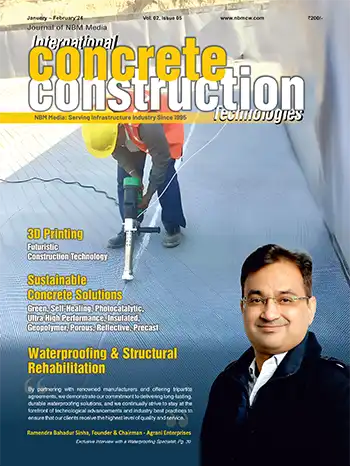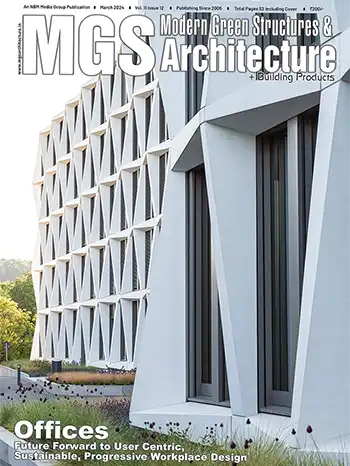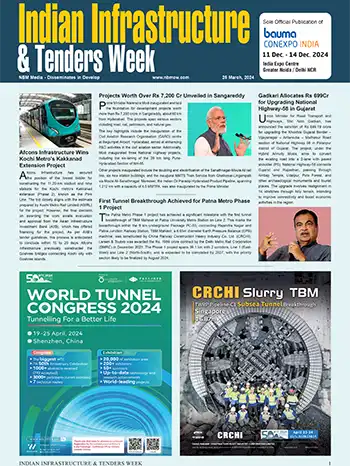Bacterial Concrete: Eco-Friendly & Sustainable Material
Sakshi Gupta, Assistant Professor, Civil Engineering, ASET, Amity University, Gurgaon.
This paper presents a review of bacterial concrete, its merits and applications relating to the strength and durability of concrete. Cracks in concrete reduce the durability of structures and for repairing those cracks the use of conventional sealing agents has found to be environmentally unsafe and costly. The solution for this comes in the form of bacterial concrete.It is a concrete which can be made by embedding bacteria thus utilizing microbiologically induced calcite (CaCO3) precipitation. Based on various studies, bacteria have found to be beneficial in enhancing the durability and strength of concrete. This technique has been found to improve the properties of concrete.
Introduction
Concrete is one of the most widely used construction materials in the world [1]. Concrete technology is a flourishing field in which the researches are still going in discretion for the sustainability and durability of concrete. Recently, bacterial or microbial concrete has been introduced to the concrete industry to enhance the performance of concreteBacterial concrete is a type of sustainable, eco-friendly material that enhances concrete performance by the microbial deposition of calcium carbonate within concrete pores through molecular reactions reducing fissures and cracks [2]. The ability of the bacteria to produce minerals such as carbonates has been put to various uses in civil engineering.
Crack formation in concrete is a phenomenon that can hardly be completely avoided due to various phenomenon and stresses occurring in set structures. While larger cracks can potentially hamper a structures' integrity and thus require repair actions, smaller cracks typically with a crack width smaller than 0.2 mm are generally considered uncomplicated. Such micro cracks do not affect strength properties of the structures but contribute to porosity and permeability of the material. Ingress of the aggressive chemicals such as chlorides, sulfates and acids may result in long-term concrete matrix degradation and premature corrosion of the embedded steel reinforcement, hampering the structures' durability.
In several studies, it has been found that concrete structures have a certain capacity for self-governing healing of the micro cracks [10]. The actual capacity of micro crack healing appears primarily related to the composition of the concrete mixtures; particularly mixtures based on a high binder content show remarkable crack-healing properties which is due to delayed (secondary) hydration of matrix embedded non-hydrated cement and binder particles upon reaction with crack ingress water. Autogenous self-healing of cracks in traditional but also high-binder content mixtures appear limited to cracks with a width smaller than 0.2 mm which is largely due to the restricted expansive potential of the small non-hydrated cement particles lying exposed at the crack surface. Another limitation to application of high binder content mixtures solely for the purpose of increasing self-healing capacities are current policies which advocate sparse use of cement in concrete for sustainability reasons as current cement production contributes about 7% to global anthropogenic CO2 emissions. For latter reasons, alternative and more sustainable self-healing mechanisms are therefore wanted.
This is a premium article available exclusively for our subscribers.
If you are already a subscriber, please Login
If not, subscribe now and get access to well researched articles & reports on infrastructure construction, equipment & machinery, innovations & technology, project reports, case studies, and more. All this by simply paying just ₹200/- for a month of complete portal access, or a discounted rate of ₹1000/- for a full year of access.
NBM&CW October 2015


















